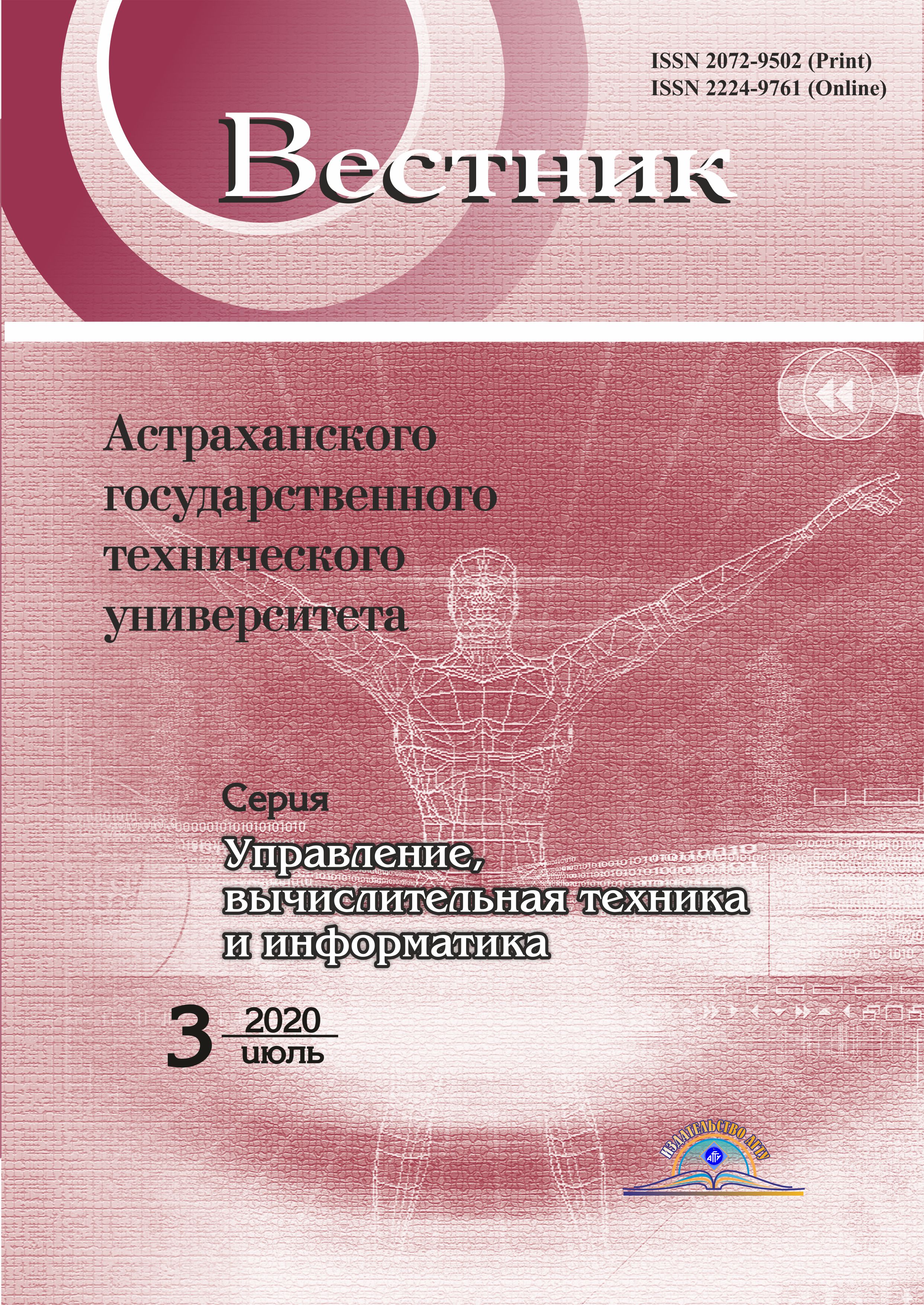from 01.01.2019 until now
Astrahan', Astrakhan, Russian Federation
VAK Russia 05.12.2013
VAK Russia 05.13.01
VAK Russia 05.13.06
VAK Russia 05.13.10
VAK Russia 05.13.18
VAK Russia 05.13.19
UDC 62
CSCSTI 20.53
CSCSTI 20.01
CSCSTI 28.01
CSCSTI 49.01
CSCSTI 50.01
CSCSTI 82.01
Russian Classification of Professions by Education 02.00.00
Russian Library and Bibliographic Classification 3296
Russian Trade and Bibliographic Classification 51
BISAC COM051300 Programming / Algorithms
The article describes the problem of the electric station power control. Currently, the most data on the supervisory control and controllability of electrical equipment comes from the remote control systems. The prerequisite for constructing the new electric power facilities or for the reconstructing the old ones is the introduction of the remote control systems. The remote control systems are rapidly developing and improving. Initially, all of them consisted of a controlled terminal that monitors and controls the system by receiving and processing analogue signals coming from analogue measuring transducers via numerous direct cable communication lines. The main disadvantages of such systems of remote control include a large number of connecting cables, scaling difficulties and low metrological characteristics. With the advent of digital transmitters, it became possible to transmit the digital signals, which reduced the number of connecting lines, simplified scaling and increased the reliability of technical systems. Today, using one measuring transducer makes possible to measure several parameters at once. The main measured parameters of power plants include the intensity of a current, phase voltages, AC frequency, active, reactive and total power. There has been described the arrangement of the remote control and communication systems of the Astrakhan TPP-2. The algorithm for monitoring the power of the station has been analyzed. A variant of its modification is proposed. An example of introducing the proposed modification of the algorithm is described. The practical significance of the study includes reducing costs caused by deviations from the station’s active power values set by the dispatcher, which are cured by LUKOIL-Astrakhanenergo, LLC.
remote control and communication systems, operative information complex, algorithm, power control, deviation values, dispatch power values, local subsystem
1. Balabanov A. V., Sharipov V. A. Sistema telemekhaniki dlia organizatsii avtomatizirovannoi sistemy dispetcherskogo i tekhnologicheskogo upravleniia i sozdaniia informatsionnoi bazy [Remote control system for organizing automated dispatch and technological control system and creating information base]. Promyshlennye ASU i kontrollery, 2008, no. 12, pp. 7-8.
2. Beliakov Iu. S. Releinaia zashchita, avtomatika i telemekhanika elektroenergeticheskikh sistem i sistem elektrosnabzheniia potrebitelei [Relay protection, automation and telemechanics of electric power systems and consumer power supply systems]. Petrozavodsk, Izd-vo PetrGU, 2012. 127 p.
3. Gumerov D. N., Abuziarov V. N., Kuleshov I. V. Osnovnye trebovaniia k sistemam telemekhaniki [Basic requirements for telemechanics systems]. Nauka tret'ego tysiacheletiia. Ufa, Aeterna Publ., 2014. Pp. 13-14.
4. Artiushenkov S. N., Bain A. M. Sposob povysheniia tochnosti registratsii sobytii v sistemakh telemek-haniki [Method of improving accuracy of event recording in remote control systems]. Sovremennye problemy nauki i obrazovaniia, 2014, no. 5, p. 150.
5. Bain A. M., Portnov E. M. Printsipy rezervirovaniia sistem telemekhaniki pri ispol'zovanii bazovogo protokola MEK 870-5-101 [Principles of backup of remote control systems using basic protocol IEC 870-5-101]. Sovremennye problemy nauki i obrazovaniia, 2014, no. 2, p. 42.
6. GOST R 55890-2013. Edinaia energeticheskaia sistema i izolirovanno rabotaiushchie energosistemy. Operativno-dispetcherskoe upravlenie. Regulirovanie chastoty i peretokov aktivnoi moshchnosti. Normy i trebovaniia [GOST R 55890-2013. Unified energy system and isolated energy systems. Operational dispatch control. Regulation of frequency and active power flows. Standards and requirements]. Moscow, Standartinform Publ., 2014. 22 p
7. Gaidukov Iu. O., Glazyrin G. V. Razrabotka metodov otsenki nebalansa aktivnoi moshchnosti v energosisteme po izmeneniiu moshchnosti generatorov elektrostantsii [Development of methods for assessing imbalance of active power in power system by changing capacity of power plant generators]. Energosberezhenie i innovatsionnye tekhnologii v toplivno-energeticheskom komplekse. Tiumen', Izd-vo TIU, 2016. Pp. 314-316.
8. Anishchenko V. A., Pisaruk T. V. Effektivnost' kontrolia dostovernosti izmerenii v avtomatizirovannykh sistemakh upravleniia energosistemami po predel'nym znacheniiam [Effectiveness of measurement reliability control in automated control systems of energy systems using limit values]. Energetika. Izvestiia vysshikh uchebnykh zavedenii i energeticheskikh ob"edinenii SNG, 2017, vol. 60, no. 5, pp. 407-416.
9. Radchenko M. G., Khrustaleva E. Iu. Instrumenty dlia sozdaniia tirazhiruemykh prilozhenii «1S: Predpriiatiia 8.2» [Tools for creating replicated applications "1C: Enterprise 8.2"]. Moscow, 1S-Pablishing, 2011. 193 p.
10. Oshchenko I. A. Azbuka programmirovaniia v 1S: Predpriiatie 8.2 [Principles of programming in 1C: Enterprise 8.2]. Saint-Petersburg, BKhV-Peterburg Publ., 2013. 272 p.
11. Kashaev S. M. Programmirovanie v 1S: Predpriiatie 8.3 [Programming in 1C: Enterprise 8.3]. Saint-Petersburg, Piter Publ., 2014. 304 p.















